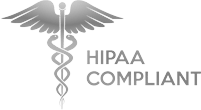Hi,
I would like to share with you some of the new procedures and additional precautions we implemented since the COVID-19 outbreak began. Your Medical Couriers (insourced or outsourced) transporting lab specimens and medical supplies, are facing new challenges. You may find these practical tips beneficial:
1. Exposure Control:
(In addition to following the CDC, WHO and OSHA guidelines.)
Touch free POD – Obtaining a Proof of Delivery (POD) is key to maintaining chain of custody. In most operations, the recipient (a staff member or patient) signs the courier’s handheld device. Reducing touchpoints is mutually beneficial and in most cases, the scribbled signature sometimes ineligible. Most courier mobile applications capture the GPS location of the delivery. Instead of the recipient’s signature, it is better that the courier notates the last 4 digits of the recipient’s employee ID or patient’s Driver License number, in addition to the recipient’s name.
Biohazard Parcel Handling – Couriers should use a glove when handling Biohazard parcels and shippers should make gloves available to the couriers at the pickup and delivery locations. Couriers are to disinfect their coolers after making a specimen delivery instead of at the end of the day.
2. Communication:
Tracking – If a potential COVID-19 specimen is transported by a Route courier (vs On Demand / STAT) it is best the staff at the pickup location call their courier’s dispatch and put in an order. By doing this, the Route courier can be notified ahead of arrival, the parcel can be tracked clearly and separately from the consolidated pickup at the routed stop. The client can receive an automated pick-up and delivery notification, and an ETA can be given to the receiving Lab.
Free Movement (no curfews yet but just in case) – In the unlikely but possible event that additional restrictions on movement will be enforced, it is best to equip all couriers with vehicle signage and letters they can be presented at checkpoints and gas stations, if the essential medical courier is challenged. A vehicle sign noting: “Urgent Medical Shipments” with your company logo and telephone number and a letter from the healthcare providers the couriers service noting: “Please allow this Medical Courier free movement to and from our medical facilities as patients health and well-being depend on the critical medical shipments they are transporting.” with at least 2 managers’ contact details.
We have successfully implemented these best practices with IDNs in multiple States.
If you would like additional details, as a courtesy, we would be delighted to connect with you and provide our insights and advice.
Take care,
Oded Hadani
Chief Executive Officer
CoolSmart Medical Logistics



